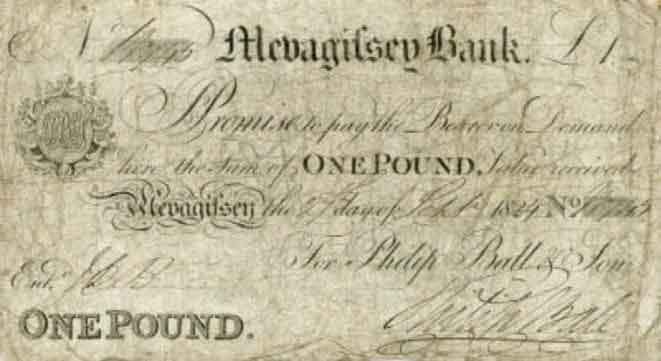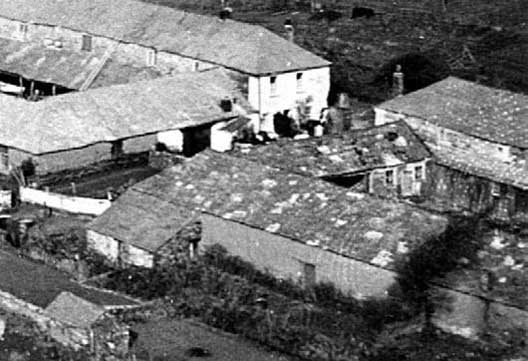The History of a Pilchard Palace - Mevagissey Bank
Philip Ball started the Mevagissey Bank in 1807, but this collapsed in November 1824 7, which is no doubt why the Liberty Seine was put up for auction in the Golden Lion, Port Isaac on 28th July 1825. The auction comprised the Liberty stop and tuck seines with four boats and materials, 7,000 bushels (175 tonnes) of salt, as well as a quantity of oil 4. With 7,000 bushels of salt, it seems the Liberty cellar was being used as a bulk salt warehouse at this time, no doubt to supply other local seines.

As Trevan noted, the golden age of the pilchard on the north coast had passed by the 1820s, and other seines were sold in the 1820s and 1830s. The Fox seine was sold in January 1821, and the Rashleigh seine was purchased for £60 in March 1837. In Port Isaac, the Mary seine was sold on 19th April 1831, the Industry seine in April 1840 and the Good Intent on 14th April 1841 4.
At the time of the Tithe Map of 1840, The Liberty and Venus cellars are shown as owned by James Stephens, although the lease for the Liberty cellar confirms he was only part owner with his brother-in-law Jonathan George. Trevan records this about James Stephens “Shopkeeper. From Mevagissey, his father being gardener to J. H. Tremayne Esq. of Hellegan. Married Betsy, daughter of the late Mr. J George of Pennant in this parish. They have one daughter.” 2 An old family album records that their daughter, Mary, was born on February 21st 1826 at half past nine 3. She went on to marry Warwick Richard Guy3, son of Mark Guy senior who owned Rashleigh and Union cellars in 1840. The tithe map shows that there was a lime kiln attached to the seaward arm of the Liberty cellar. It was smaller than the surviving kiln on the other side of the valley, and had gone by the time of the 1880 Ordnance Survey map. Betsy Stephens died in 1872, and when James Stephens died in 1876 Mary Guy was their only child. She would have inherited his assets, but presumably transferred the Liberty and Venus cellars to her eldest son Mark junior, since on 14th August 1885 he was using them as security for a £400 loan from Royal Camel and Bottreaux Lodge of the Independent Order of Oddfellows, with a further £150 on 14th August 1890. The 1885 loan document describes the Liberty cellar as ‘now a coal store’ 1.


Mark Guy had more money problems, since on 25th March 1886 he mortgaged Rashleigh and Union cellars for £500 to Richard Parnell of Altarnun. He raised a further £100 on 9th July 1891 when he conveyed all four cellars to his father with the loans outstanding. On 10th January 1893 his father conveyed the properties back to Mark on payment of the outstanding mortgage, but on 19th June that year he re-mortgaged them again with the Camel and Bottreaux Lodge of the Independent Order of Oddfellows. On 1st October 1910 he transferred a £500 mortgage with John Parnell of Advent to the Mid-Cornwall branch of the Independent Order of Rechabites1. Some of these mortgages were still outstanding when Mark Guy died on December 7th 1918 3.